Building Code
With more than 12,000 structures erected in over 100 countries, Sprung has met the building code requirements of the codes as outlined below on a site specific bases.
Country | Building Code/Standard |
USA | ASCE-7 “Minimum Design Loads for Buildings and Other Structures” |
Canada | NBC 2020 “National Building Code of Canada” |
Asia | GB9 Standard |
Australia | AS/NZ 1170 |
Ukraine | DBN V.1.2-2:2006 (the Ukrainian Building Code) requirements UkrSERPO certified products |
UK | EN 1991-1 (for loading) |
Architectural Membranes – All architectural membranes selected for use in a Sprung structure will meet the fire specification criteria as outlined in the appropriate building codes and standards of each jurisdiction.
